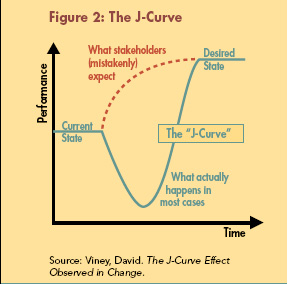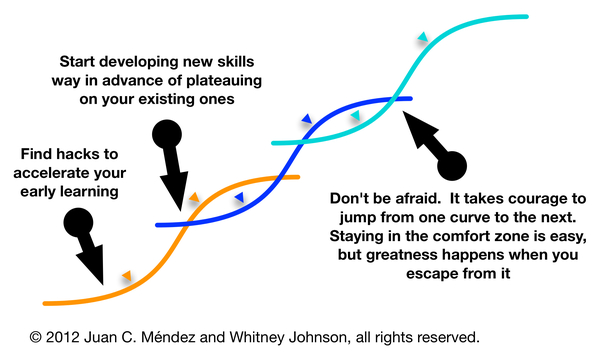The reasons and key influencers for BIM adoption are set out in the Vision and Strategy sections of a Business Case for BIM. Commenting on Part 1 of our posts on developing a Business Case for BIM, Su Butcher (@SuButcher) of construction industry social media consultancy Just Practising, highlighted the BIM4M2 business case resource ‘The Curve’ (http://www.bim4m2.co.uk/curve/index.html). The content and structure of The Curve can support the development of the Leadership section of a Business Case for BIM. In order to paint a complete picture showing the impact of BIM on your organisation, the investment required for implementing the technology, developing the processes and engaging your team needs to be communicated in the Business Case.
Investment: Overview
Integrating BIM into your organisation is not going to happen overnight. The investment required to sustainably implement BIM is significant and needs to be spread over time to ensure there is a positive return. In the context of BIM integration, investment is not just the cost of technology. Training people, developing or amending work processes, learning curve productivity, and supply chain or project team education are all aspects of BIM integration that comes at a cost and needs to be addressed in the investment section of the Business Case. Keep in mind the context of this section is to provide decision makers with an expected value and time period for realising a return on their investment, not a list of proposed BIM integration costs.
Investment: Tools
We have heard the case being made that all you need to do BIM is a spreadsheet. This is probably technically true at some level, but in reality investment in technology is needed to integrate BIM with construction information creation, validation, consumption and sharing. While I wouldn’t agree with everything in Antony McPhee’s blog post ‘Different BIMs for different Purposes’ (http://practicalbim.blogspot.ie/2015/04/different-bims-for-different-purposes.html), the statement ‘BIM does involve some new and different processes, but try doing it without technology’, is a valid commentary on the real, practical use of BIM and his overall perspective is worth reading.
A technology audit comparing your organisation’s current ITC infrastructure and software licensing against where you want to be in terms of technology adoption should to be included. This exercise will highlight your current ITC resources and enable you to identify technology that is:
- Costing money to maintain and needs to be replaced
- Not suitable for integrating BIM and other related technologies and needs to be replaced
- Potentially suitable for integrating BIM and requires minor upgrades
- Currently suitable for integrating BIM and other related technologies (We would also suggest breaking down this category into resources that are suitable in the short and medium term.)
Selection of new technology should relate to your organisation’s current and future activities, as this combined with license cost will enable you to communicate the value on the investment in BIM tools. There is no single BIM tool that does it all. You should select the tools that suits your business practices.
Investment: Team
In the construction industry, organisations depend on teams of people to deliver value. Companies with highly skilled people can perform better if managed effectively and given the opportunity to succeed. To keep a team oriented competitive advantage, staff competencies must be developed. Purchasing BIM technologies is a commercial waste if there is no one in your organisation that can get the most out of them.

The first aspect of team investment is training. There are a number of training resources available on the market including online video tutorials, third level courses, cpd training courses, books, events, and blogs. They key to developing a successful training investment plan is following a targeted training approach. Different BIM user profiles, such as model authors or model reviewers, will have different training requirements in terms of application, content, and processes. Purchasing training services outside of your requirements is another investment related waste to be avoided.
J-Curve-Effect
In addition to training requirements, the learning curve impacts associated with new technologies and processes should be included in the Business Case. It is essential that a Business Case for BIM manages the expectations of decision makers. BIM will not bring improvements in team performance on Day 1 of implementation. Adopting innovation results in an initial dip in productivity, as people come to terms with new processes and learn new methods of delivery. Once the team has developed the skills and is comfortable with the new processes, productivity can be improved from the initial benchmarks. A J curve describes the productivity dip associated with an initial learning period and subsequent positive impacts.
Investment: Team Commitment
As with leadership, investment for BIM integration needs to be shared between the organisation and individual team members. From the team member perspective, it is commitment rather than a financial investment that is required. Learning, productivity, and change related frustrations will need to be overcome by project teams during the early days of BIM integration. As business processes evolve through BIM integration, individuals will be challenged to operate outside of their comfort zone to test the new ways of working. Communication with staff and identifying their concerns in the Business case highlights any team related risks that may impact the investment into BIM.
Continuous Improvement
Competitive advantage can be sustained through pro-innovation policies and practices. Continuous improvement helps maximise the potential of adopting new technology. Clear improvement targets and metrics should be established in the Business Case and serve as BIM integration success criteria. Aligning BIM performance analysis with key business decision points, such as management, strategy, or team performance reviews in the Business Case demonstrates the intention of embedding BIM integration with company culture.

An effective way of communicating the intended ongoing impact of BIM integration is an S curve cycle (refer to https://hbr.org/2012/09/throw-your-life-a-curve/ for additional background on S curve cycles and business innovation). The faster BIM methods and processes can be learned the faster a commercial benefit can be realised. As with most innovations, the law of diminishing returns applies and performance will plateau. Business Cases for BIM should include the requirement for a policy and workgroup that targets innovation cycles to keep on top of emerging technologies, trends, and ways of improving performance.
The timeline and innovation jumps are dependent on your integration plan. Think of S curve steps as intervention points where something new, such as technology, ways of working, or additional uses for existing technology, bring your organisation’s understanding of BIM to the next level. Adoption and implementation is only the beginning of the BIM journey. BIM integration is an ongoing process that should promote positive disruption.
Business Case for BIM Summary
Our posts on developing a Business Case for BIM provide a framework for understanding and communicating the short, medium, and long term impacts of integrating BIM within organisations. BIM can have significant positive impact on your bottom line if it is viewed in terms of improving businesses process rather than a bit of software or project deliverable. Developing a Business Case is the first step for successful BIM integration, as it helps frame the risks and benefits of BIM in the context of your organisation and company culture.

Comments are closed.